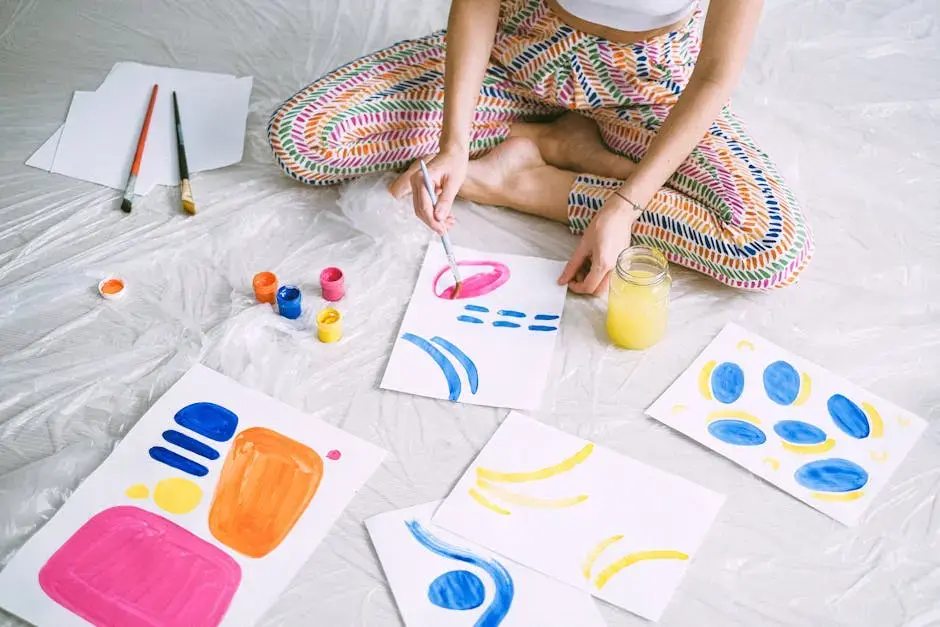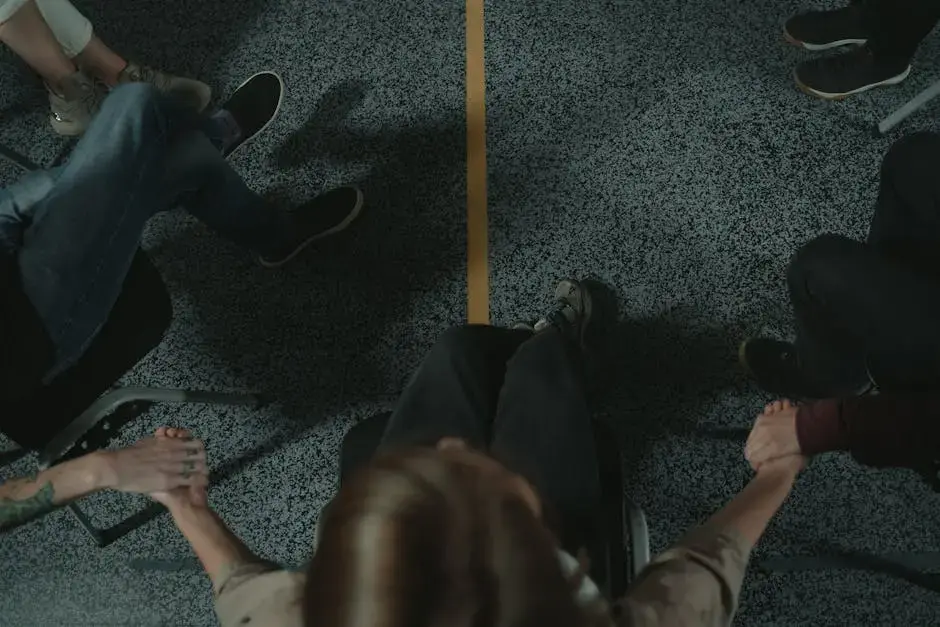How Creative Therapy Drives Personal Growth
- Karrie Stafford

- Dec 6, 2024
- 5 min read
Creative therapy is not just about art; it's a powerful tool for personal development. In this blog, we'll explore how engaging in creative practices can lead to emotional healing, self-discovery, and growth. Through various methods such as art, music, and writing, individuals can uncover their emotions, confront challenges, and find new ways to express themselves. Let's delve into the transformative power of creative therapy and its implications for personal growth.

Understanding Creative Therapy
Creative therapy is an inclusive term that encompasses a range of therapeutic approaches utilizing creative expression. By engaging in activities like painting, dancing, or writing, individuals can access deep-seated emotions and thoughts. This form of therapy promotes healing by allowing people to express themselves in ways that traditional talk therapy may not. Furthermore, creative therapy provides a non-threatening space where individuals can explore their identities and experiences.
At its core, creative therapy emphasizes the process of creation over the finished product. Many may worry about their artistic skill; however, the essence of this therapy lies in self-expression rather than perfection. Participants often find that by taking risks and experimenting with different mediums, they develop a deeper connection to their innermost feelings. This connection serves as a catalyst for growth, encouraging them to face their fears and overcome emotional hurdles.
The Role of Creativity in Healing
Creativity offers a multitude of benefits, particularly in the context of healing. Engaging in creative activities stimulates the brain's reward center, releasing feel-good chemicals like dopamine. This biochemical response not only enhances mood but also fosters a sense of accomplishment. When individuals create something from nothing, they often experience a surge of pride, which can significantly impact their confidence and self-esteem.
Moreover, creative therapy provides an outlet for emotions that might be difficult to verbalize. People often struggle to articulate their feelings, especially during challenging times. By channeling their emotions into creativity, individuals can confront complex feelings such as grief, anger, or anxiety in a more manageable way. This process not only aids in emotional regulation but also paves the way for personal transformation.
Research has shown that engaging in creative practices can reduce symptoms of anxiety and depression. The meditative quality of focusing on a creative task allows individuals to find solace amidst chaos. These moments of creation can serve as a refuge, enabling individuals to step back from their worries and immerse themselves in the present. Such mindfulness enhances their overall well-being and fosters resilience.
Different Forms of Creative Therapy
Creative therapy encompasses various forms, each offering unique benefits. Art therapy, for instance, focuses on visual arts such as painting and sculpture. Through guided sessions, individuals can explore their creative instincts while processing emotions. This method is demonstrated to be particularly effective for those who may be hesitant to express themselves verbally, providing a safe space to explore feelings through colors and shapes.
Music therapy is another dynamic form, using melodies and rhythms to unlock emotions. Participants often engage in songwriting, playing instruments, or even listening to certain genres of music to facilitate expression. Music has the remarkable ability to transcend language barriers, making it a powerful tool in fostering emotional connection and healing. Engaging with music can transport individuals to different emotional landscapes, helping them articulate feelings they might struggle to verbalize.
Drama therapy offers a unique approach by employing performance arts. It invites participants to embody different characters and enact scenarios that reflect their life experiences. This immersive experience can provide new perspectives on personal challenges and facilitate emotional release. Whether through improvisation or scripted plays, drama therapy enables individuals to step outside their typical narratives, fostering creativity and insight.
How Creative Therapy Promotes Self-Discovery
Engaging in creative therapy often leads to profound self-discovery. As individuals create, they may uncover hidden aspects of their identities that they had previously overlooked. This exploration can yield significant insights and help them navigate their inner landscapes more effectively. By confronting their emotions and experiences, participants may discover strengths and vulnerabilities they were unaware of, paving the way for personal growth.
The act of creating also encourages risk-taking and experimentation. In a therapeutic setting, individuals are free to explore new ideas without the fear of judgment. This freedom fosters a playful approach to self-exploration, allowing them to challenge societal norms and their own limiting beliefs. As they delve into their creativity, they often discover new passions and interests that ignite their life journey.
Additionally, the community aspect of certain creative therapy modalities is invaluable. Working alongside peers during group sessions can foster connections that provide support and encouragement. This sense of belonging enhances the self-discovery process, as individuals learn from one another’s experiences and insights. Creating together can break down barriers, promoting vulnerability and openness in a trusting environment.
Building Emotional Resilience Through Art
Artistic expression is a powerful avenue for building emotional resilience. When faced with adversity, individuals often benefit from exploring their feelings through creativity. By engaging with art, they can externalize complicated emotions, making them easier to confront and navigate. This process not only enables emotional release but also offers strategies for managing future challenges.
Moreover, engaging consistently in creative activities cultivates a habit of self-reflection. Through this practice, individuals can analyze their emotional responses and develop healthier coping mechanisms. Over time, they may find themselves better equipped to handle life's difficulties, whether they arise in personal relationships, work, or other areas. This ability to bounce back strengthens their emotional fortitude, allowing for growth in the face of setbacks.
Ultimately, building emotional resilience through art contributes to overall mental wellness. When individuals engage creatively, they not only find joy but also establish a toolkit of strategies for dealing with emotional distress. By incorporating artistic practices into their routines, they foster a proactive approach to mental health, enhancing their overall quality of life.
Success Stories: Transformative Experiences
Many individuals have found transformative experiences through creative therapy. Take, for instance, Sarah, a young woman who struggled with anxiety for years. After participating in art therapy, she discovered a passion for painting, which became her primary coping mechanism. The vibrant colors she used reflected her emotions, helping her externalize feelings she had once bottled up. Through this form of expression, Sarah not only learned to manage her anxiety but also incorporated creativity into her daily life.
Similarly, James, a retired veteran, turned to music therapy to process his trauma. Through songwriting, he was able to articulate pain and experiences that had long been silenced. Sharing his songs with a group provided an avenue for connection and healing. As he reflected on his lyrics, James discovered new ways to narrate his story, transforming past trauma into a source of strength.
These success stories illustrate the profound impact of creative therapy. By using creative outlets, individuals are empowered to confront their challenges and embrace healing. Each journey is unique, but the common thread remains: through creativity, many have found a path to greater self-awareness, resilience, and growth. This transformation highlights the universal potential of creative therapy as a valuable tool for personal development.
Embracing Creative Therapy for a Fulfilling Life
In conclusion, creative therapy offers a unique pathway to personal growth and healing. By engaging our imagination and creativity, we can navigate life’s challenges, enhance our emotional well-being, and foster a deeper understanding of ourselves. Whether it's through painting, music, or other forms of artistic expression, creative therapy empowers us to embrace our emotions and experiences, making room for growth and positive change.




Comments